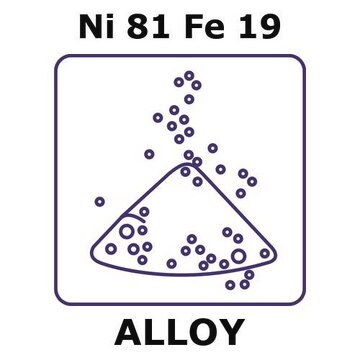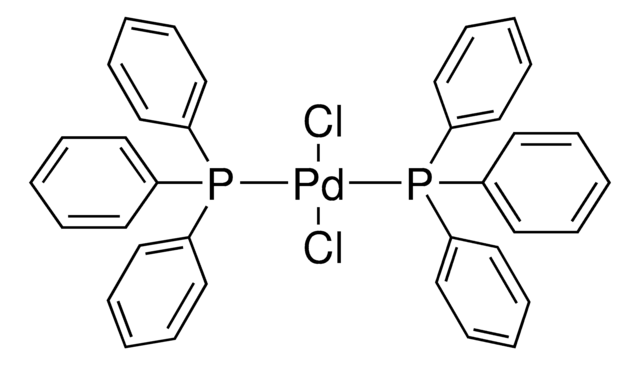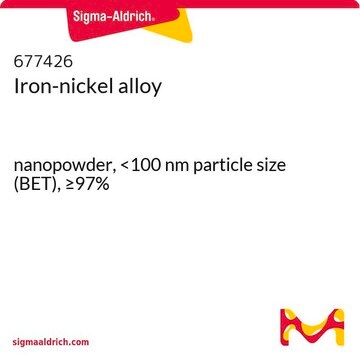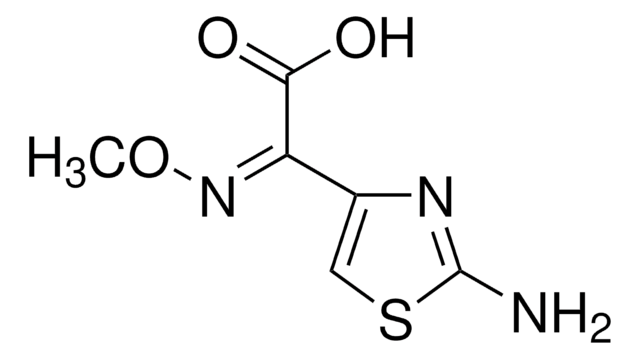637149
Iron nickel oxide
nanopowder, <50 nm particle size (APS), ≥98% trace metals basis
Sinónimos:
Diiron nickel tetraoxide
About This Item
Productos recomendados
Quality Level
assay
≥98% trace metals basis
form
nanopowder
particle size
<50 nm (APS)
density
5.368 g/mL at 25 °C (lit.)
bulk density
0.89 g/mL
application(s)
battery manufacturing
SMILES string
O=[Ni].O=[Fe]O[Fe]=O
InChI
1S/2Fe.Ni.4O
InChI key
NQNBVCBUOCNRFZ-UHFFFAOYSA-N
Categorías relacionadas
General description
Application
- fabrication of magnetic nanofiber for data storage and transfer
- electrocatalysts for the splitting of alkaline water
- formation of composite nanofibers for efficient water oxidation electrocatalysis
Physical form
signalword
Warning
hcodes
Hazard Classifications
Skin Sens. 1
Storage Class
11 - Combustible Solids
wgk_germany
WGK 3
flash_point_f
Not applicable
flash_point_c
Not applicable
ppe
Eyeshields, Faceshields, Gloves, type P3 (EN 143) respirator cartridges
Elija entre una de las versiones más recientes:
¿Ya tiene este producto?
Encuentre la documentación para los productos que ha comprado recientemente en la Biblioteca de documentos.
Los clientes también vieron
Artículos
Professor Hui Mao explores the use of superparamagnetic iron oxide nanoparticles (INOPs) that offer an alternate contrast-enhancing mechanism.
Professor Yadong Yin (University of California Riverside, USA) examines both direct (thermal decomposition, solvothermal, hydrothermal) and indirect (templated) synthesis methods of magnetite nanocrystals and reviews in detail the landscape of these various synthetic methods for magnetite nanocrystal and their applications in magnetic assembly, magnetic hyperthermia, and Li-Ion batteries.
The application of magnetism and magnetic materials pervades our modern civilization in the form of electrical power, communications and information storage.
Magnetic materials permeate numerous daily activities in our lives. They are essential components of a diversity of products including hard drives that reliably store information on our computers, decorative magnets that keep the shopping list attached to the refrigerator door, electric bicycles that speed our commute to work, as well as wind turbines for conversion of wind energy to electrical power.
Nuestro equipo de científicos tiene experiencia en todas las áreas de investigación: Ciencias de la vida, Ciencia de los materiales, Síntesis química, Cromatografía, Analítica y muchas otras.
Póngase en contacto con el Servicio técnico

![[1,1′-Bis(diphenylphosphino)ferrocene]dichloropalladium(II)](/deepweb/assets/sigmaaldrich/product/structures/130/734/8846aa26-1858-458a-998d-8c306c13bf0f/640/8846aa26-1858-458a-998d-8c306c13bf0f.png)




![[1,1′-bis(difenilfosfino)ferroceno]dicloropaladio(II), complejo con diclorometano](/deepweb/assets/sigmaaldrich/product/structures/825/986/4317978b-1256-4c82-ab74-6a6a3ef948b1/640/4317978b-1256-4c82-ab74-6a6a3ef948b1.png)





